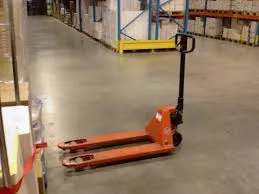


Understanding Industrial Fall Protection A Critical Safety Measure
In the industrial landscape, ensuring worker safety is of paramount importance. One of the most significant hazards faced by employees in sectors such as construction, manufacturing, and warehousing is falling from heights. This is where industrial fall protection comes into play. Falls are one of the leading causes of serious work-related injuries and fatalities, making effective fall protection systems essential for safeguarding the well-being of workers.
What is Fall Protection?
Fall protection refers to a variety of safety systems and practices designed to prevent workers from falling from elevated work surfaces. These can include guardrails, safety nets, personal fall arrest systems (PFAS), and other protective measures. Regulations established by organizations such as the Occupational Safety and Health Administration (OSHA) in the United States set forth requirements for fall protection in various industrial settings. According to OSHA, fall protection is required at elevations of six feet in the construction industry and at four feet in general industry settings.
Types of Fall Protection Systems
1. Guardrails These are barriers installed around elevated surfaces to prevent workers from falling. Guardrails should be constructed to withstand specific loads and have to be at a height that adequately protects workers.
2. Personal Fall Arrest Systems (PFAS) PFAS are widely used in industries where workers are required to operate at height. This system usually includes a full-body harness, a lanyard, and an anchor point. The harness distributes fall forces over the body, while the lanyard connects the harness to an anchor, preventing a worker from hitting the ground.

3. Safety Nets Often used in construction work, safety nets catch workers if they fall from a height. These nets should be installed at a distance that will minimize the risk of contact with the lower level.
4. Positioning Systems These systems allow workers to be supported at elevated positions while keeping their hands free for work. They include components such as belts and ropes designed to secure workers in a safe position.
Training and Implementation
The effectiveness of fall protection systems relies heavily on proper training and commitment to safety protocols. Workers must be educated about the risks associated with working at heights, the types of fall protection available, and how to use the equipment correctly. Regular training sessions and drills help to reinforce safety measures and ensure that all employees are familiar with emergency procedures.
Furthermore, employers must conduct regular inspections of equipment and work sites to identify potential hazards and make necessary adjustments. Maintaining a culture of safety is crucial, where employees feel empowered to report unsafe conditions without fear of reprisal.
Conclusion
In conclusion, industrial fall protection is a vital aspect of workplace safety that can save lives and prevent serious injuries. By implementing robust fall protection systems, providing comprehensive training, and fostering a safety-first culture, employers can significantly mitigate the risks associated with working at heights. The commitment to maintaining high safety standards not only protects employees but also enhances overall productivity and morale within the workforce. Ensuring that every worker returns home safely at the end of the day must remain a top priority in any industrial setting.



